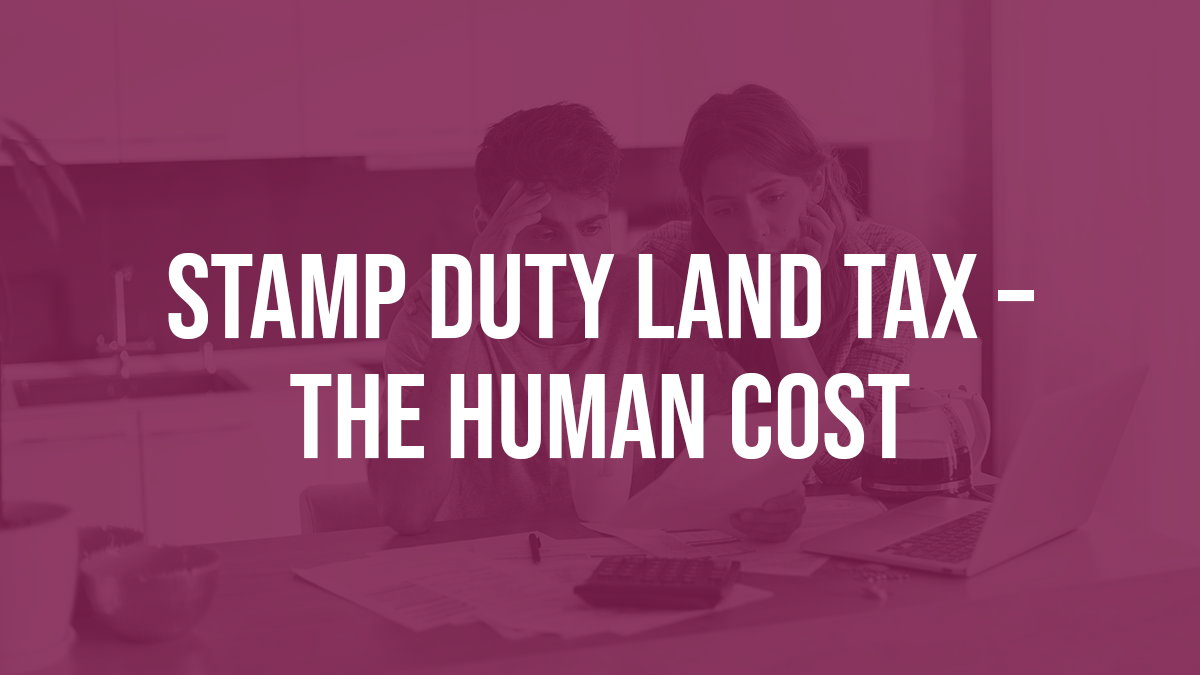Firstly, I want to say an incredible well done to everyone for getting through the…
Tax for me is about people. A tax return is a human story, telling me what the people involved have done, where they’ve been, what they’re doing now and where they might be headed. Every kind of tax return, from income tax to capital gains and yes, even Stamp Duty Land Tax, is a roadmap of human stories. What particularly bothers me about this disconnect is just how deeply SDLT impacts the lives of not just those paying it, but everyone involved in its process. More specifically, how the financial and mental wellbeing of so many people hang so perilously on a tax that’s so complex and so often misunderstood.
In personal conversations, either with family or friends, they tend to think that it’s all about simple numbers and maths, and it makes me realise that tax in general has an image problem, though not in the way people think.
The Public
For starters, there’s the obvious – the taxpayer themselves. Lulled into a false sense of security by a general wisdom which tells them tax is dull and a more specific one telling them SDLT will be dealt with by their lawyer. They have no idea, generally, it’s a self-assessed personal tax for which they will be held personally liable if it’s wrong.
They have even less idea about any of the various complexities of SDLT legislation which can impact the overall cost. The 3% Surcharge, the 2% Non-UK resident Surcharge, Multiple Dwellings Relief, Mixed Use Relief and so on. All these can make thousands or even tens of thousands of pounds worth of difference to the final bill and can be the difference between living comfortably or scraping by. Take the Advanced Mortgage Funding case back in 2019, where clients ended up having to take out additional borrowing to cover their purchase after being wrongly initially advised re the 3% surcharge and only being correctly advised post-exchange.
In a cost-of-living crisis, homebuyers already hard-pressed to afford their purchases can ill afford mistakes so potentially expensive, or to take on the additional debt it can entail. Nor can they easily cope with paying thousands of pounds over the odds in tax where a relief is missed.
Financial Advisers
Itisn’t just the end taxpayer who is impacted. Take the AMF case mentioned above – a broker fined thousands by the Financial Ombudsman for an error that wasn’t even theirs – but that of a solicitor. The Ombudsman found the clients were entitled to rely upon what they’d been told as advice. Consequently every financial adviser and broker has the added stress of not being able to answer a common question from clients – how much will their SDLT be – lest they get it wrong and end up losing thousands as well as their reputation.
Legal Advisers
Solicitors too, are hardly immune from the pressures surrounding SDLT. Assumed by society in general to be the gatekeepers for this particular tax, they find themselves given a responsibility they never actually asked for and technically shouldn’t have. After various strongly worded yet frustratingly vague releases put out by both HMRC and the Solicitors Regulation Authority back in the early to mid 2010s, solicitors are perhaps understandably reluctant to be seen to be looking for ‘savings’ on SDLT for their clients in any way. That caution often blinds them to factors which can cost clients money and leave them in a deep hole. Ultimately, they are in a position of being responsible for paying the right amount of tax, but without incurring a HMRC enquiry or a PI claim.
Moreover, the tendency of successive governments to use SDLT as an easy headline-grabbing measure to drive towards broad policy goals makes the lives of solicitors that much harder. It’s bad enough that back in 2016 we had the introduction of the 3% surcharge, poorly thought out and having ignored most of the suggestions given in the consultation period when enacted (requiring several amendments to be issued). That change caused massive confusion, leading many taxpayers into awkward situations.
Look more recently to the 2020 introduction of the ‘Stamp Duty Holiday’ to stimulate the property market. So successful was it, many conveyancing firms found themselves having to take on additional admin staff to cope with the added workload – staff those firms could ill afford to retain when the holiday was withdrawn in September 2021. So much added stress. So many solicitors struggling under the time pressure of a fixed end date for a benefit driving such a surge in the market.
Time pressure of course is another serious concern for solicitors generally. Buyers and sellers seldom have patience when it comes to property dealings and between their demands and the timescales often imposed by mortgage lenders and enforced by estate agents, it’s a rare day indeed when a conveyancer has a spare moment to breathe – not an ideal state of affairs in which to be dealing with a tax with 49 different reliefs, exemptions and exceptions and counting.
The Core of the Problem
Finally, there’s HMRC itself. Millions are spent on ‘enforcement’ and chasing down underpayments of tax, caused by the very nature of the tax itself and the problems outlined above. Intentionally or otherwise, the current state of Stamp Duty in terms of legislation, administration and enforcement has created an odd disparity in cases. Those where the figures for SDLT ‘seem’ too low, or where a relief may be claimable tend to generate an anxiety that further scrutiny or even an enquiry from HMRC may be generated. Conversely, cases where a figure might appear unduly high will rarely cause concern, either for professionals or HMRC, meaning losses can go unnoticed indefinitely.
Zero is spent on HMRC agents looking for erroneous overpayments, compounding the issue and taking money from the pockets of families who need that money now more than ever.
SDLT, as it stands, isn’t working. It’s time we took stock of the human cost of that failure, and found a better way.



